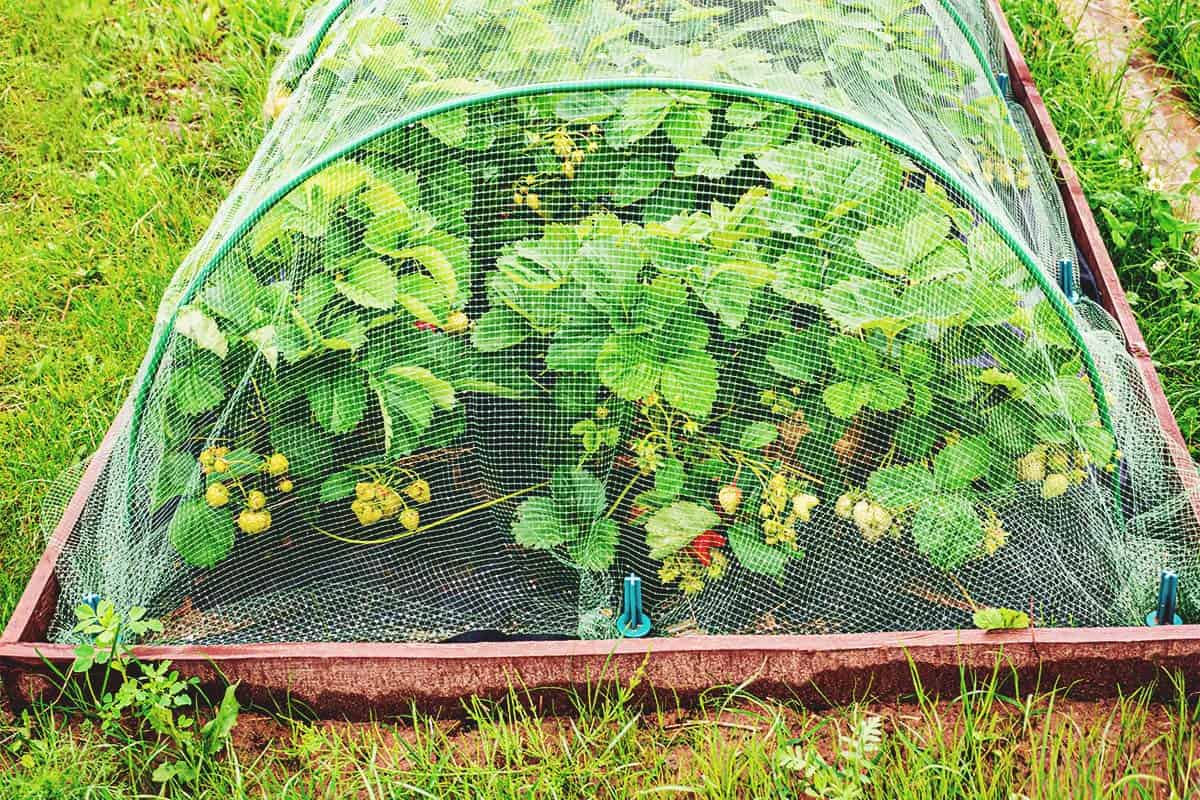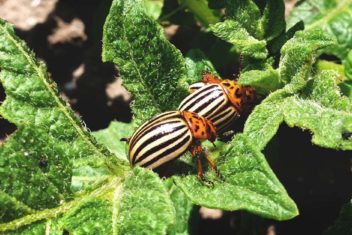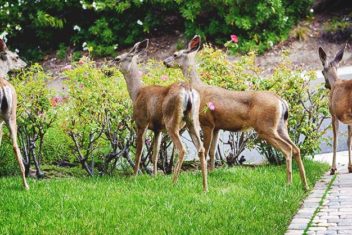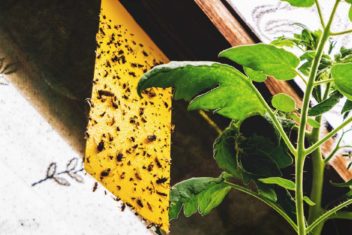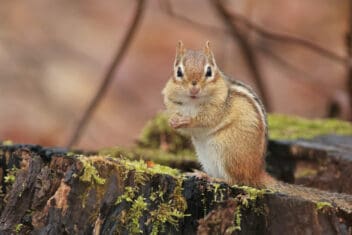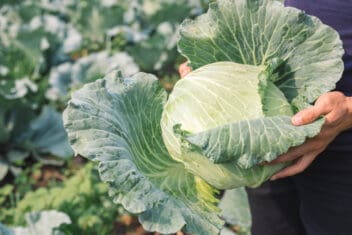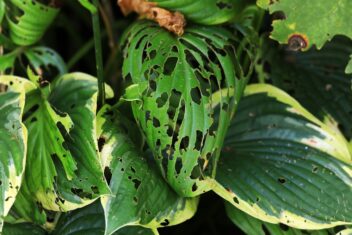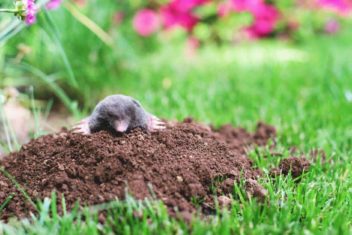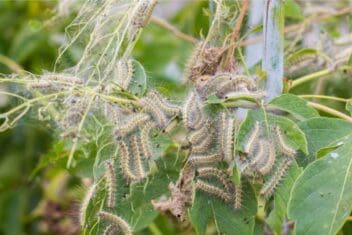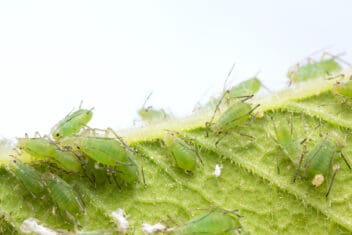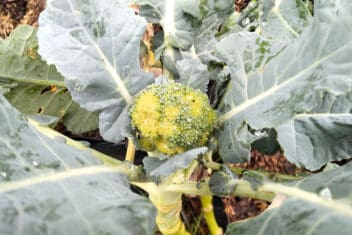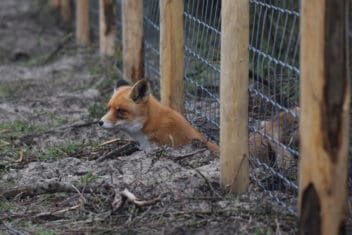Birds are marvelous animals to have around our homesteads. They’re beautiful to look at, sing entertaining songs, and eat bad bugs. However, sometimes birds can be pests when they eat the seeds that you’re trying to grow in your garden.
Those lovely birds may think your garden is a smorgasbord of goodies and become extremely irritating. There’s no question you need to prevent the destruction of your new seedbeds. But can you coexist with wildlife? Yes!
As a homesteader and a licensed wildlife rehabilitator, I humanely protect my gardens from the deer, birds, and other wildlife who live on my farm. It’s all about balance, and it’s totally possible.
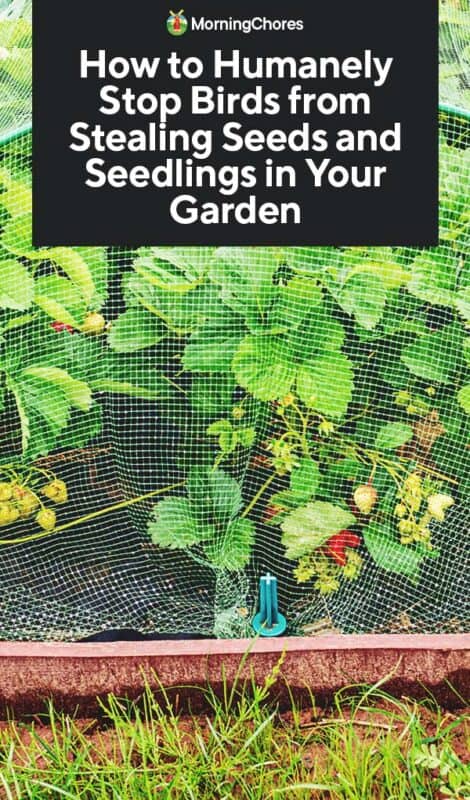
The Benefits of Birds
You don’t want to eliminate birds from your homestead. There are many benefits to having birds around. They eat slugs, caterpillars, and moths, all of which can wreak serious havoc on your crops.
If you’ve ever battled cutworms, slugs, grubs, aphids, whiteflies or borers, then you know pests can be a serious problem. Birds can help keep these troublesome insects in check.
Birds – along with bees, bats and butterflies – are also pollinators. The most common bird pollinators are hummingbirds, orioles, robins, finches, and buntings.
How To Protect Your Garden Seeds
The first thing you need to do is make a plan of attack to stop birds from eating your garden seeds. But wait! I’m not suggesting you kill wild birds. In fact, in some cases that would be illegal. I am suggesting that you protect your garden humanely.
You may have started some of your young plants indoors and will be transplanting them out in the garden. These plants are safe from birds since, in general, birds don’t eat vegetation.
Seeds that you direct sow are the concern. Some seeds such as beans, sunflowers, and lettuce are extremely attractive to wild birds – and who can blame them?
Here’s how to protect those direct-sown plants.
1. Row Covers
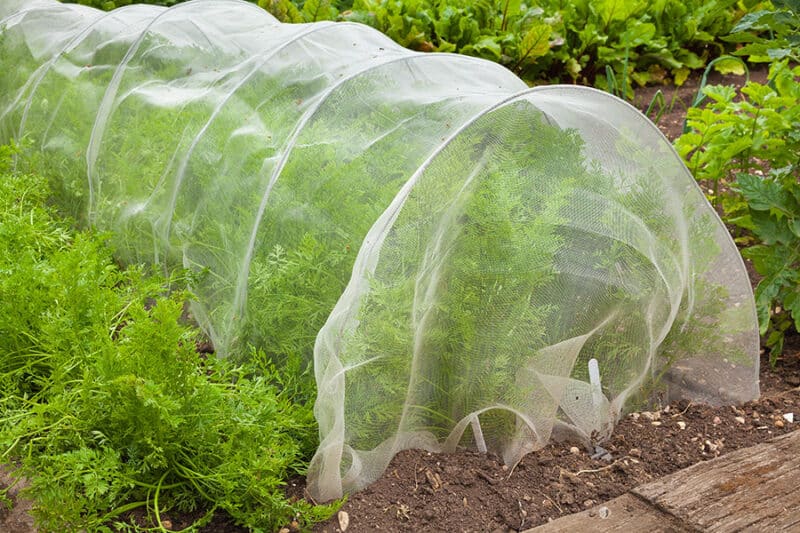
Row covers are useful at the beginning of the season in order to warm the soil and protect young seedling from wind and cold. They also work well for keeping out insects and birds. I literally use them on all my early crops.
You can lay the row cover directly on the seedbed over newly planted seeds. As they grow they will push the row cover upwards. Once they are a couple of inches tall you can remove the row cover.
In addition, you can use wire hoops to support the garden fabric. This will give you a nice structure for taller plants. Another advantage is that you can keep it on longer without interfering with the plant’s growth.
Make sure to tuck in the edges of the fabric and close off the front and end of the tunnel. They need to be completely enclosed so that birds don’t hop on the ground and enter your seedbed.
2. Shade Cloth
I have several pieces of shade cloth that I use to cover summer lettuce that I plant by direct seeding. The good news is that this gives me a later harvest than spring-planted lettuce. The bad news is that lettuce is a favorite of red-winged blackbirds.
I structure the shade cloth just like I do my early spring row coverings. I use hoops, drape the shade cloth over the hoops and pin all sides to the ground.
3. Netting
We often think of netting as being used on mature plants that are fruiting.
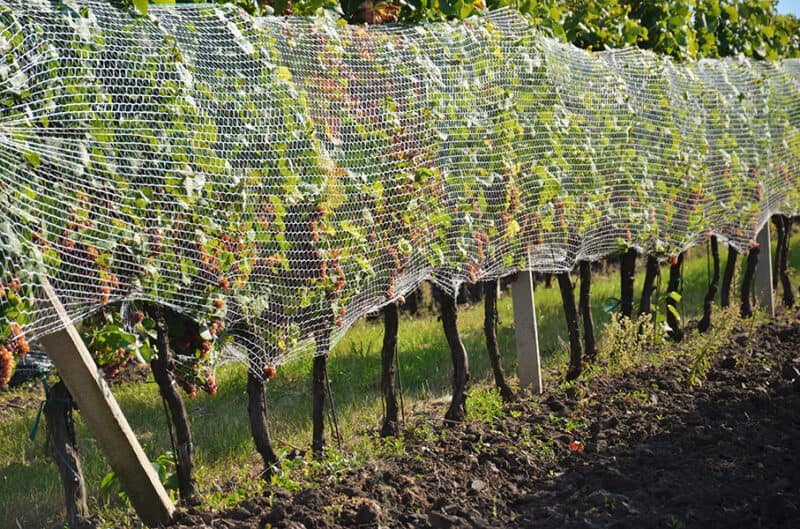
However, you can drape netting right over your seedlings or on the ground, as well. This method works well to keep birds from landing on your garden soil and eating your garden seeds.
Use bamboo poles to make a cage. Cover your cage with netting. Deer netting is a little bit heavier and stronger then bird netting, so that’s what I prefer. You can also use netting directly on the ground.
4. Aluminum Screening
Aluminum screening works well because the birds are confused by the reflections caused by the sun hitting the aluminum. On their website, Michigan State University Extension shows how to use a roll of narrow aluminum screening. This is similar to using shade cloth except the material is much firmer.
Bend the screening into a U-shape and placing it over the seedbed to provide protection from scratching birds. Use U pins to hold it firmly against the ground.
Another variation of this is hanging aluminum pie pans. This is often used with deer but works on some species of birds. Hang the pie pans from a fence so that they blow in the breeze, catch the light, and make banging sounds.
5. Chicken Wire
Lay chicken wire directly on the ground and plant your seeds in the holes. This is a great way to provide spacing as well. Birds like to scratch in the dirt and look for food.
The chicken wire prevents them from scratching and thus finding your seeds.
You can also build tunnels out of chicken wire. This can be used to protect small fruits such as strawberries from the birds but rabbits and deer as well.
6. Paper Bags
Sometimes it is not the seeds in the ground you need to protect but the sweet-smelling seeds on the plant. This can be a big problem with sweet corn or sunflower seeds.
After the corn has been pollinated and is developing ears, you can place paper bags on them. Do this once the silks have started to turn brown. Place bags on sunflower heads once the seeds have fully matured.
Simply place the bag over the ear and tie at the stalk. Give your plant a good look-see and make sure you are not trapping bugs inside. I did that one year with my sweet corn. It was just sad.
7. Stakes and String
There are a variety of methods using stakes and strings to keep birds from landing in your garden. Attaching the string to stakes and crisscrossing the string above the bed can help deter birds.
The string should be only two or three inches above the ground in order to keep the birds out. Otherwise, they will just walk under.
Another tactic is to run paper or metallic streamers around the garden beds. Mylar streamers can also be used to scare them.
8. Predator Statues
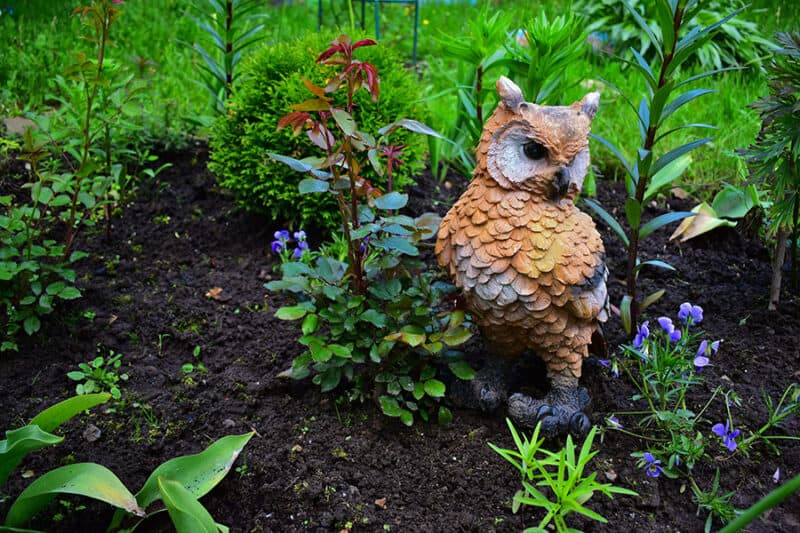
You can purchase predator statues that you mount in the garden or lay in the dirt. Owls and snakes are popular. The statues can trigger the prey response and frighten the birds away so they won’t start eating the seeds in your garden.
The key with this method is you need to move the fake animals every three days. The birds get used to them and realize they are not real – unless you move them around.
The popular scarecrow would also fall into this category. Crows are also said to be frightened by effigies of dead crows.
8. Windchimes and Garden Spinners
These are used to make noise as well as to decorate the garden. However, they typically don’t work too well to deter birds and may be more useful for invading rabbits. Still, add a few to your garden for the decorative effect, and if they stop birds from eating your garden seeds, it’s a bonus!
Know Your Birds
It’s a big help to know the bird species that live on your homestead, either all year or just for a spell as they migrate. Not all birds eat seeds. Some, like the bluebird, eat a lot of insects including grubs and caterpillars.
These beneficial birds you want to encourage by having housing and a source of water for them.
Blackbirds
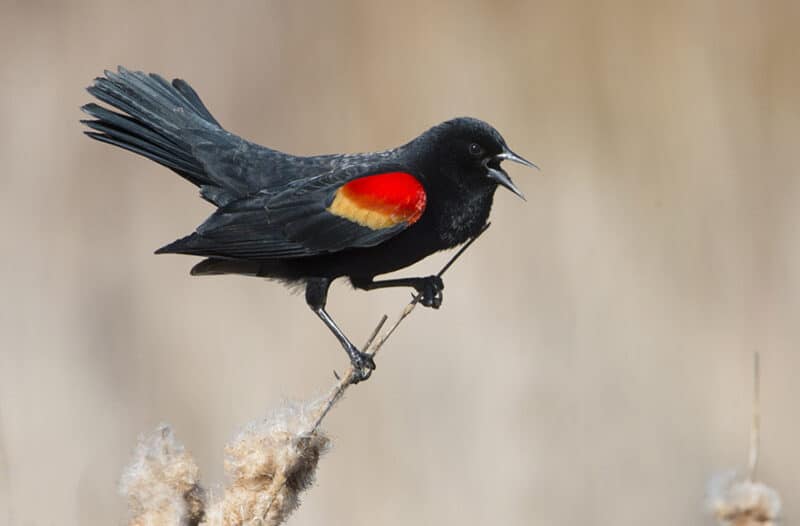
Blackbirds and their family members include grackles, red wing blackbirds, cowbirds, and the European starling.
These birds love garden seeds especially sunflower seeds and grains including their favorite corn. They will also scratch in the dirt to find lettuce, peppers, and tomatoes.
Crows
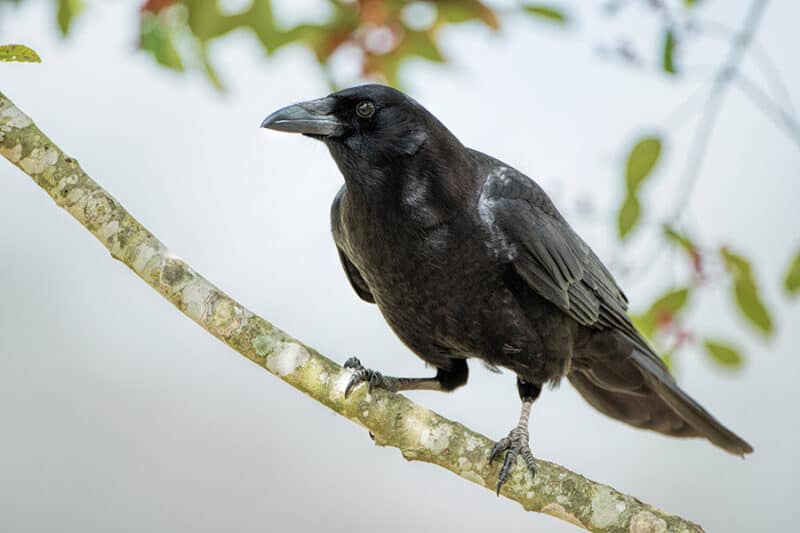
Crows are very intelligent and very social. They gather in groups to plot and plan how to eat your corn.
They have a bad reputation that may be partly justified. Crows do eat seeds and especially like corn on the cob. However, crows also eat a lot of bad bugs, so you might not want to chase them off entirely.
Crows will eat many insects and grubs during the growing season. In fact, the Humane Society states that a family of crows eats over 40,000 grubs, caterpillars, and numerous other insects in one nesting season. That’s a lot of damaging insects.
Finches
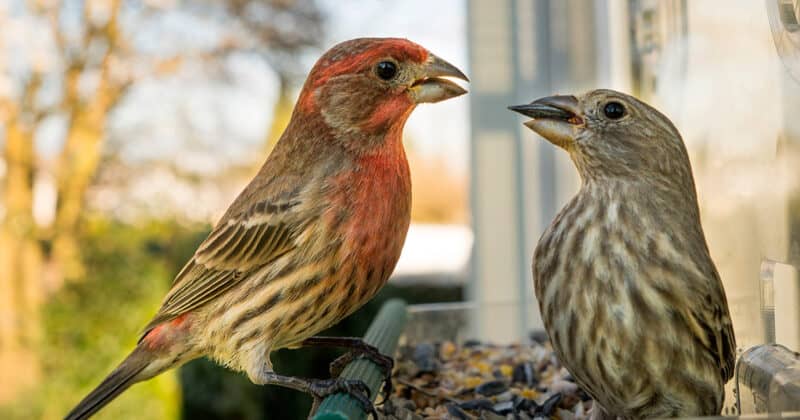
Finches are delightful happy little birds and will appreciate a thistle bird feeder. However, they also love small lettuce seeds. Since they are so small you need to be careful that they don’t slip under your defenses.
They need deterants such as row cover or netting with small holes. Make sure you have tight tunnels with no openings.
Give The Birds What They Want
This may sound like you are giving in to their demands, but it’s a smart way to encourage them to visit your garden without sacrificing your food. Feeding the birds will benefit both of you! It helps to keep them away from your newly planted seeds and they’ll stick around to eat insect pests.
Seed Plants For The Birds
There are many plants that can help draw the birds away from your garden and provide them with a nutritious meal. Millet, amaranth, and sunflowers benefit many species. You can even plant a bed of lettuce and let it go to seed for your feathered friends.
Finches appreciate a number of flowering “weeds” such as milk thistle, Michaelmas daisies, coneflowers, goldenrod, teasel, and tickseed.
Crows and jays eat bigger nuts such as acorns and beechnuts.
Plant these away from your food crops to lure the birds away so that they can enjoy their tasty treats without bothering the crops you want for yourself.
Birds Aren’t All Bad!
It’s important to protect your investment and your family’s food supply. Birds can definitely be a pest when they are trying to eat your newly planted garden seeds. But there are many ways to encourage birds in the garden without losing crops.
